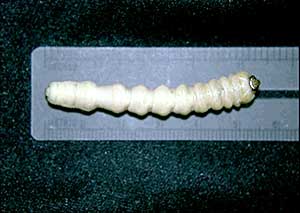
The Asian Longhorn Beetle
Friend Michael G. from Somersworth, NH asked if there were any reports yet of Asian Longhorn Beetles in Vermont. During the recent Vermont Farm Show I tried to get close enough to the US Forest Service booth to ask them the question. I didn't make it but I think as of right now, the answer is "no". I have seen one report from Massachusetts so regardless of the response, it's just a matter of time before we see them in Vermont and New Hampshire.
Here's a site from the University of Vermont to help with identification. It is confusing because of the number of beetles around. I remember seeing a display at the Montshire Museum in Norwich where they showed 143 longhorn beetles that live in this part of New England. I haven't been back to the Montshire in years so I don't know if the display is still there. The number is coming from memory but I think it is accurate.
Here's a site from the University of Vermont to help with identification. It is confusing because of the number of beetles around. I remember seeing a display at the Montshire Museum in Norwich where they showed 143 longhorn beetles that live in this part of New England. I haven't been back to the Montshire in years so I don't know if the display is still there. The number is coming from memory but I think it is accurate.
Since I work outside much of the year, I am regularly "seeing" new beetles. I am amazed how many beetles are large enough to make you notice when they land on you. Many of these are longhorn beetles but so far not the Asian.
Here is a picture of the larvae that was posted by the University of Massachusetts Amherst.

If you see a beetle that you think is an Asian Longhorn Beetle, try to catch it and put it in a baggie or a jar for reference. Then call your local, state or university agriculture folks for identification confirmation. You may be surprised how the beetle feels like it's biting you when you try to pick it up. In the meantime, keep your eye out.
George Africa
The Vermont Gardener
On Facebook as a personal gardening page--George Africa, and as a Like Page named Vermont Flower Farm and Gardens.
On Twitter as vtflowerfarm
Always here to help you grow your green thumb!
